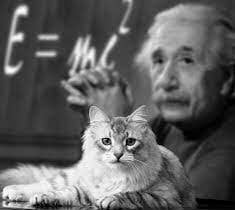Scientists use holographic imaging to detect viruses and antibodies
The breakthrough has the potential to aid in medical diagnoses and, specifically, those related to the COVID-19 pandemic.

[Oct. 13, 2020: New York University]
A team of New York University scientists has developed a method using holographic imaging to detect both viruses and antibodies. The breakthrough has the potential to aid in medical diagnoses and, specifically, those related to the COVID-19 pandemic.
"Our approach is based on physical principles that have not previously been used for diagnostic testing," explains David Grier, a professor of physics at NYU and one of the researchers on the project, which is reported in the journal Soft Matter. "We can detect antibodies and viruses by literally watching them stick to specially prepared test beads."
If fully realized, this proposed test could be done in under 30 minutes, is highly accurate, and can be performed by minimally trained personnel. Moreover, the method can test for either the virus (current infection) or antibodies (immunity).
The scientists, who also include NYU doctoral candidates Kaitlynn Snyder and Rushna Quddus as well as NYU Chemistry Professor Kent Kirshenbaum and NYU Physics Professor Andy Hollingsworth, base their test on holographic video microscopy, which uses laser beams to record holograms of their test beads. The surfaces of the beads are activated with biochemical binding sites that attract either antibodies or virus particles, depending on the intended test. Binding antibodies or viruses causes the beads to grow by a few billionths of a meter, which the NYU researchers have shown they can detect through changes in the beads' holograms.
"We can analyze a dozen beads per second," explains Grier, "which means that we can cut the time for a reliable thousand-bead diagnostic test to 20 minutes. And we can measure those changes rapidly, reliably, and inexpensively."
The holographic video microscopy is performed by an instrument, xSight, created by Spheryx, a New York-based company Grier co-founded.
The scientists also note the versatility of their method.
"This instrument can count virus particles dispersed in patients' saliva and also detect and differentiate antibodies dissolved in their blood," adds Grier. "This flexibility is achieved by changing the composition of the test beads to model what we are testing.
"Each type of bead tests for the presence of a particular target, but can also test for several targets simultaneously. Our holographic analysis distinguishes the different test beads by their size and by their refractive index--an easily controlled optical property."
The scientists say that this capability can be used to develop libraries of test beads that may be combined into test kits for mixing with patient samples. This will support doctors in distinguishing among possible diagnoses, speeding patients' treatment, reducing the risk of misdiagnosis, and cutting the cost of healthcare.
This Brighter Side of News post courtesy of New York University.
Like these kind of stories? Get The Brighter Side of News' newsletter.
The research was supported, in part, by a RAPID Award from the National Science Foundation (DMR-2027013); this support is aimed at addressing the critical shortage of fast, effective, and inexpensive medical diagnostic tests.



